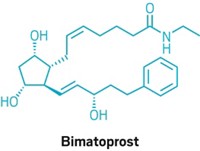Advertisement
Grab your lab coat. Let's get started
Welcome!
Welcome!
Create an account below to get 6 C&EN articles per month, receive newsletters and more - all free.
It seems this is your first time logging in online. Please enter the following information to continue.
As an ACS member you automatically get access to this site. All we need is few more details to create your reading experience.
Not you? Sign in with a different account.
Not you? Sign in with a different account.
ERROR 1
ERROR 1
ERROR 2
ERROR 2
ERROR 2
ERROR 2
ERROR 2
Password and Confirm password must match.
If you have an ACS member number, please enter it here so we can link this account to your membership. (optional)
ERROR 2
ACS values your privacy. By submitting your information, you are gaining access to C&EN and subscribing to our weekly newsletter. We use the information you provide to make your reading experience better, and we will never sell your data to third party members.
Computational Chemistry
Synthesis-planning program now can think one step ahead
Retrosynthesis software Chematica plans two-step-at-a-time sequences
by Sam Lemonick
January 8, 2020
| A version of this story appeared in
Volume 98, Issue 2

Total synthesis can sometimes seem more like art than science, especially when a chemist introduces a step that doesn’t seem to get a molecule closer to the desired end product, but after another step, turns out to set up a crucial transformation. Harvard University synthetic chemist Elias J. Corey called a pair of steps like this, which first increases the molecule’s complexity before ultimately simplifying it, a tactical combination. Now chemists demonstrate that a computer program can find these multistep strategies too.
Bartosz Grzybowski of the Polish Academy of Sciences and Ulsan National Institute of Science and Technology and colleagues report their Chematica software has found almost 5 million tactical combinations after several months of computing (Chem 2019, DOI: 10.1016/j.chempr.2019.11.016). They compare that to the nearly 500 human-discovered tactical combinations included in Corey’s LHASA retrosynthesis database.
Chematica plans syntheses through more than 100,000 chemical rules that Grzybowski and colleagues taught the program over 15 years. In the new work, the researchers had Chematica examine some 220,000 molecules and find two-step reaction sequences that included the molecules either as synthesis targets or intermediates. They whittled the resulting sequences down to about 250,000 tactical combinations that didn’t lead to unwanted side reactions and couldn’t be done by a single step. They extrapolated from those 250,000 sequences to 5 million possible tactical combinations when they accounted for variations like different substrates or conditions.
As an example, the tactical combination–hunting program—called Strategist—found a route to a trialicyclic motif with a diterpenoid moiety seen in some natural products. The sequence starts with a Lewis acid–catalyzed cyclization of an epoxyalkene, followed by furan reduction.
Before Strategist, Chematica could only plan one synthetic step at a time. Planning a step ahead will be key to planning synthetic routes to natural products and other complex molecules, Grzybowski says. “This to me is the first time where a computer creates new synthetic knowledge” and does it faster and better than humans can, he says. The team’s database of tactical combinations is available online for academic use.
The researchers demonstrated the power of the Chematica-discovered combinations with a laboratory-verified synthesis of imperanene, a platelet aggregation inhibitor, in 4 steps, compared with 8 to 11 steps in published examples.
While noting that finding new tactical combinations isn’t the most pressing need for synthetic chemists, Richmond Sarpong of the University of California, Berkeley, says that Strategist will be a nice addition to Chematica if it can find nonintuitive and generally applicable combinations. Sarpong’s group has a collaboration with MilliporeSigma to use the commercial version of Chematica, called Synthia.





Join the conversation
Contact the reporter
Submit a Letter to the Editor for publication
Engage with us on Twitter